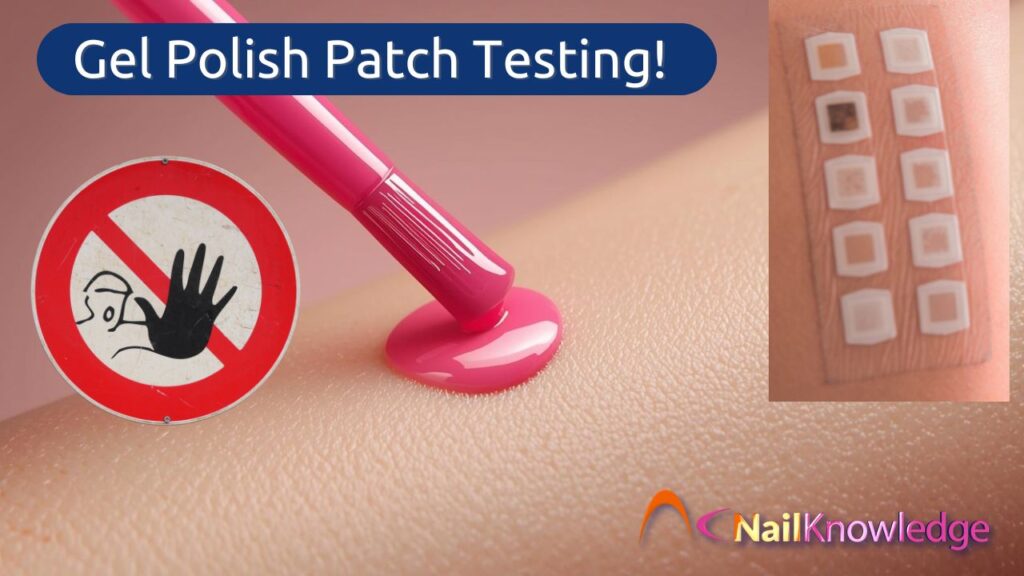Ever been tempted to dab a bit of gel polish on your skin just to “see if you’re allergic”? It might seem like a sensible shortcut, especially if you’ve had a reaction in the past or are trying a new brand. But here’s the thing, gel polish patch testing on skin is not only ineffective, it’s potentially dangerous. Let’s break down why this common DIY beauty habit is one to avoid, and what you should do instead.
What Actually Là a Patch Test?
Before we get stuck in, let’s clear up what a patch test really means. In medical terms, a patch test is a controlled method used by dermatologists to identify allergens, substances that can trigger allergic reactions. These allergens are applied to the skin in tiny, measured amounts under special patches, which are then monitored over time to check for signs of irritation or inflammation.
What this isn’t: slapping on some gel polish behind your ear or on your wrist and hoping for the best. That’s not just unscientific, it can actually cause the very problem you’re trying to avoid.
The Hidden Dangers Lurking in Gel Polish
Gel polish may look harmless in its shiny little bottle, but it contains some pretty intense ingredients. Chemicals like acrylat Và metacrylat are the main culprits here. These are well-known allergens, meaning they’re capable of causing allergic contact dermatitis, an itchy, sometimes painful skin rash that flares up after exposure to a substance your body sees as a threat.
Here’s the kicker: these ingredients are meant to polymerise, in other words, harden into a safe, stable coating – under UV or LED light on your nail plate, not your skin. When you put uncured gel directly onto your skin, those raw chemicals can soak in and sensitise your body.
And once you’re sensitised? That’s a life sentence. Even a tiny bit of contact in the future, not just with nail products, but potentially with dental materials, medical adhesives, or other common substances that contain similar compounds, can spark a reaction.
So, Is Any Kind of Gel Polish Patch Testing Safe?
Short answer? Not the kind you can do at home. The only safe way to test for a gel allergy is through a formal medical patch test, carried out by a dermatologist. They’ll use purified, lab-measured versions of the allergens in question, applied in microscopic amounts and monitored over time. That’s the gold standard, not a dot of polish behind the ear.
It might feel like overkill, especially if you’re just experimenting with new colours or brands. But remember, allergies don’t mess around. One bad reaction can leave you permanently sensitive, not just to that product but to a whole family of related chemicals.
What Should Nail Techs and Salon-Goers Do Instead?
Here’s where we bring it back to basics. The real key to avoiding allergic reactions isn’t about testing, it’s about prevention. And that means:
- Never apply gel polish to the skin, for any reason.
- Apply only to the nail plate – that’s the hard surface of your actual nail, not the surrounding skin or cuticle area.
- Ensure the product is fully cured using the correct UV or LED lamp.
- Avoid skin contact during application and removal – even a small slip of the brush can cause problems over time.
This is especially important in salon settings, where repeated exposure can add up fast. Whether you’re a nail tech or a beauty enthusiast doing DIY manicures at home, the safest practice is one that keeps gel strictly where it belongs, on the nails.
Real Talk: Why the Confusion?
It’s easy to see where the misunderstanding comes from. In the world of hair dye and skincare, patch testing is widely recommended and even required in some cases. So it’s natural to assume the same applies to gel polish.
But the difference lies in the chemistry. Hair dyes and face creams are formulated to be applied to skin, gel polish isn’t. It’s designed to undergo a chemical transformation on a non-porous surface (your nail plate), and exposing the raw product to your skin completely bypasses that safety mechanism.
Think of it like handling raw chicken, it’s fine if you cook it properly, but you definitely don’t want it rubbing all over your skin.
The Bottom Line: No, You Shouldn’t Patch Test Gel Polish on Skin
If there’s one thing you take away from this, let it be this: gel polish patch testing on your skin is not a safe shortcut. It might seem like a quick way to check for allergies, but it can do far more harm than good. The chemicals in gel formulas are strong, reactive, and need to be handled properly to avoid serious consequences.
If you’re concerned about potential allergies, the only trustworthy route is through a dermatologist. And if you’re applying gel at home or in a salon, the most effective “test” is your technique – keep it clean, keep it precise, and keep it off the skin.
Your future self – with happy, healthy nails – will thank you.


